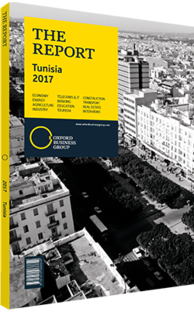A new gas pipeline in the south of Tunisia nears completion
In 2006 large reserves of natural gas and condensate were discovered in the Jenein Sud permit in the Ghadames basin. Since then, the Tunisian National Oil Company (Entreprise Tunisienne d’Activités Pétrolières, ETAP) and Austrian oil and gas company OMV have worked to industrialise the field as part of the Nawara Development Project by surveying and drilling in the area, with eight exploratory wells dug between 2008 and 2010.
To help facilitate the necessary transport and processing infrastructure needed in the south of the country, the South Tunisia Gas Pipeline (STGP) project was launched in 2008 to accommodate the potential 4m cu metres of daily production.
Project Brief
Launched in 2008 at a cost of €1.6bn, the 370-km STGP is expected to connect the remote Nawara central processing facility, which has a capacity of 2.7m cu metres of gas and 7000 barrels of condensate, to a newly built €1bn treatment plant in the port city of Gabès further north. The 24-inch pipeline will have a capacity of 10m standard cu metres per day and is expected to provide approximately 11% of total domestic gas consumption upon completion.
The STGP project aims to enable approximately 16bn standard cu metres of gas to be sold annually on the Tunisian market, which would help the country significantly reduce its growing dependence on imports to meet its rising energy demand, which is largely estimated to increase by 5% annually in the coming years (see overview).
The project will be jointly operated by ETAP and OMV, in a 50:50 concession granted by the former Ministry of Industry, Energy and Mines in 2010. The major stakeholders financing the project include one of the project initiators, OMV, which pledged €500m to both the Nawara processing plant and the pipeline in May 2014; the African Development Bank, which provided a €135.2m loan for the project; and the European Investment Bank, which signed a co-financing agreement with ETAP for €150m.
Progress
Following the different financing pledges made in 2014, the contract to build the pipeline was awarded to two multinational construction companies, Deggendorf-based Max Streicher and locally owned Bouchamaoui Industries. In addition to building the physical pipeline, the companies were also awarded the construction of the interconnecting facilities, such as the intermediate valve stations, and the starting and receiving facilities. Construction began in 2015, and as of mid-2016 about half the pipeline had been finished, with the final completion date expected by the end of 2017.
Challenges
The execution of the project has not been without its difficulties, however. It faced a range of problems endemic to frontier markets. As there are few infrastructure limitations in the south, construction of the pipeline has been progressing quickly, but in the northern stretch, the presence of farmland has made land acquisition more difficult. One of the contractors, Bouchamaoui Industries, for example, saw access to its Nawara construction site blocked by a group of striking workers in July 2016. Furthermore, although the employees are protected from the elements by special equipment, the extreme summer heat and risk of sandstorms has led to frequent delays.
Impact
Nonetheless, once it is completed, the project is expected to help make the Tunisian oil and gas market more attractive for further investment, as the supporting infrastructure will be in place in the southern region – an area the government is hoping will attract new stakeholders. According to the newly created Ministry of Energy, Mining and Renewable Energies, the south of Tunisia is already well mapped out in terms of seismic studies, but has been lacking the foundational means for operators to more easily commercialise what they extract.
You have reached the limit of premium articles you can view for free.
Choose from the options below to purchase print or digital editions of our Reports. You can also purchase a website subscription giving you unlimited access to all of our Reports online for 12 months.
If you have already purchased this Report or have a website subscription, please login to continue.

